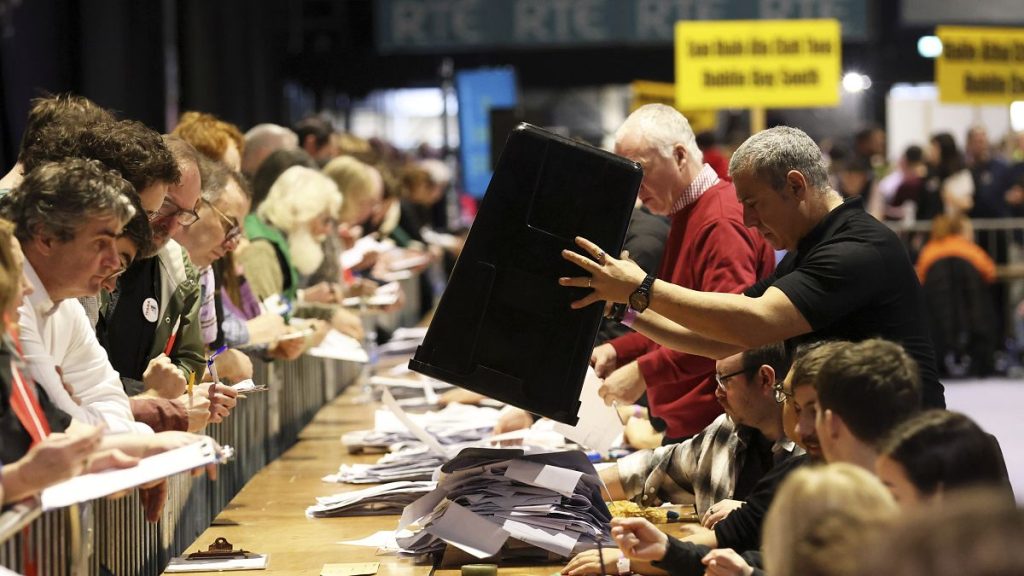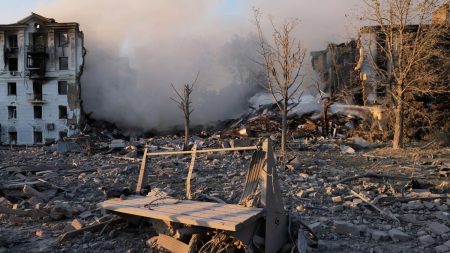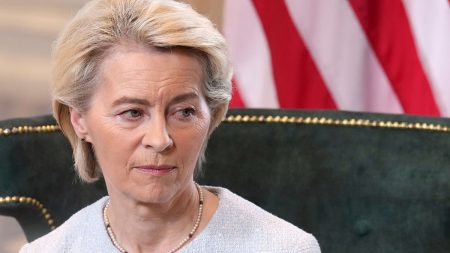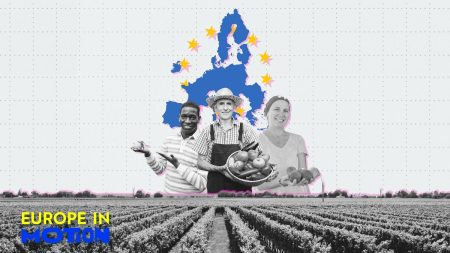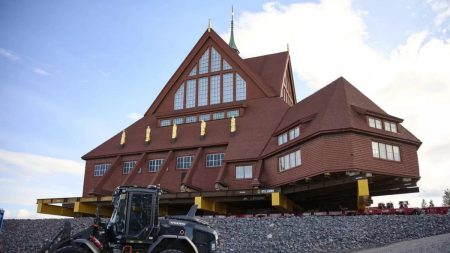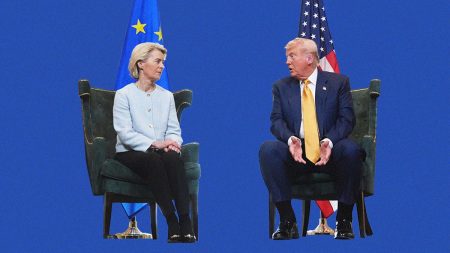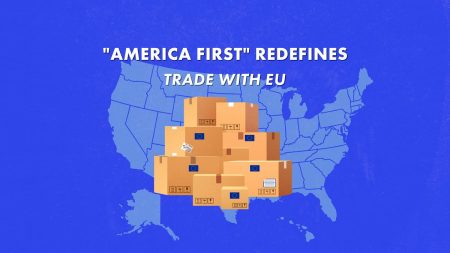The national elections in Ireland commenced with the opening of ballot boxes at 10:00 CET on Saturday, marking the beginning of an extensive vote-counting process across the country. As the day progressed and polls closed, an official exit poll was released, highlighting a tightly contested race among Ireland’s three principal political parties: Fine Gael, Fianna Fáil, and Sinn Féin. The exit poll, conducted by Ipsos B&A and published by the public broadcaster RTÉ, indicated a close division of voter support among these parties along with smaller political groups and independent candidates, signaling a potential shift in the political landscape. Fine Gael led the exit poll with approximately 21% of the vote, closely followed by Sinn Féin at 21.1% and Fianna Fáil at 19.5%.
As the votes were tallied, early results indicated that 36 seats in the Dáil, Ireland’s parliament, had been filled by Sunday morning. Fine Gael candidates secured 11 seats, Fianna Fáil obtained 9, Sinn Féin claimed 8, with the remaining seats allocated to independent candidates and representatives from smaller parties. Notably, Sinn Féin, which champions the reunification of Northern Ireland with the Republic of Ireland, could potentially emerge as the largest party in the Dáil. However, they may face challenges in forming a government due to historical reluctance from Fianna Fáil and Fine Gael to collaborate with them, primarily stemming from Sinn Féin’s leftist ideology and its associations with the Irish Republican Army (IRA) during the Northern Ireland conflict.
The outgoing government, dominated by Fine Gael and Fianna Fáil—parties with over a century of political rivalry and a shared center-right political agenda—has navigated a competitive and evolving political environment. Both parties stem from opposite sides of Ireland’s civil war, yet their policies often align, making it difficult for them to completely shut out Sinn Féin from government involvement. Ireland employs a proportional representation system, allowing multiple lawmakers to be elected from each of the 43 constituencies, which benefits smaller parties and independents with strong local appeal.
The campaign leading up to this election was heavily influenced by pressing voter concerns, notably centered around the cost of living and the lack of affordable housing. Ireland is grappling with a significant housing crisis, a consequence of insufficient construction during the prosperity of the Celtic Tiger era and subsequent economic downturns post-2008. This crisis has manifested in soaring property prices, increased rents, and a spike in homelessness, causing widespread dissatisfaction among the electorate and fueling debates on how to address these urgent issues.
Additionally, the housing crisis is compounded by the challenge of immigration, particularly the recent influx of displaced individuals into Ireland. The country, traditionally characterized by emigration, is now home to over 100,000 Ukrainians and numerous asylum seekers from the Middle East and Africa. The government has struggled to provide adequate housing for these newcomers, resulting in the establishment of tent camps and makeshift accommodation centers. This situation has given rise to social tensions and protests regarding the treatment and integration of asylum seekers, further complicating the political discourse during the elections.
As the vote counting progresses and the results finalize, the ramifications of these elections are pivotal for Ireland’s future. The complex interplay of housing issues, immigration challenges, and party dynamics will shape policy priorities and the potential for coalitions in the new government. Voters are keenly aware that the outcome will reflect their desires for change and governance that addresses the pressing social and economic issues facing the nation. The next few days will be critical as the final tallies are confirmed and negotiations for a governing coalition may begin, potentially reshaping Ireland’s political fabric for years to come.




